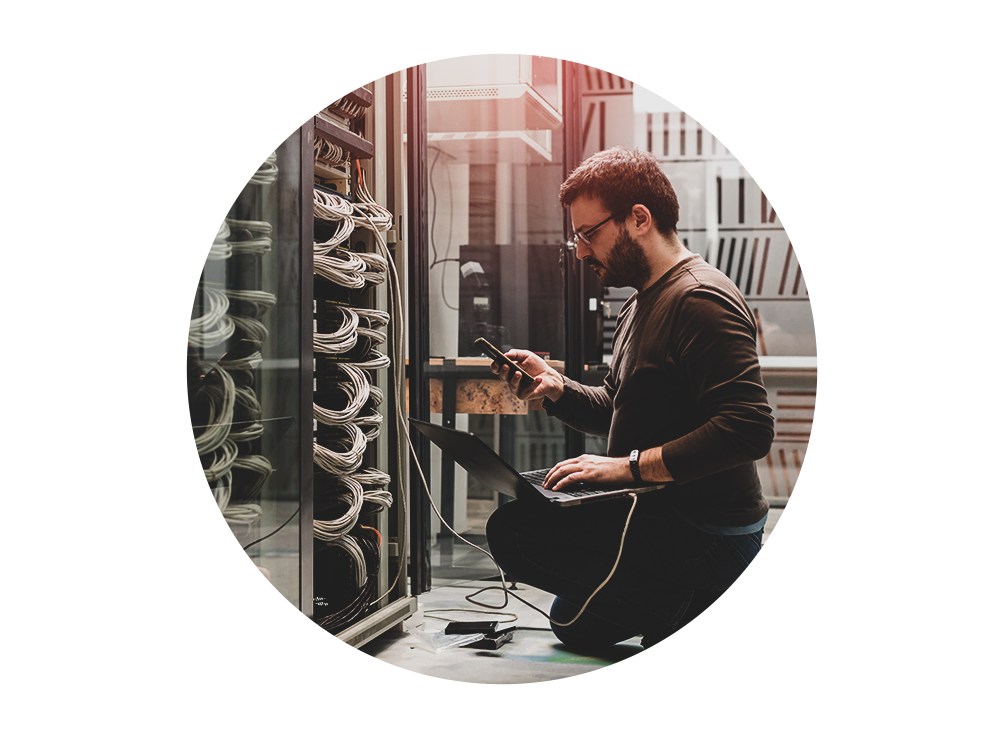Though the “Internet of everything” is by no means a new phenomenon, according to a 2021 report analysts predict the market for connected devices and associated services will reach nearly $263 billion by 2025.1 Through fiber and mesh networks, there is no limit to what can be connected, leading to the potential of 15 billion connections by 2025.2 And right now, demand for connectivity is growing from customers, accelerated by the COVID-19 pandemic and increased loads.
In turn, governments around the world are making investments in digital infrastructure that have societal benefits and bridge rural digital divides. While there’s ample market potential for connectivity, the picture is not without challenges. Telecommunications service providers are facing down continued material and labor shortages, diminishing returns on invested capital (ROIC) and enhanced competition because of new availability of spectrum and network coverage. And now that construction delays have become the rule and not the exception, the entire industry is looking for ways to work and build better, smarter and most important, more efficiently.
I believe it’s a matter of perspective. In these challenges are opportunities for process and product design improvements. The resulting installations will speed a paradigm shift. Simply put, when providers and companies collaborate at the outset, supporting better lives through connectivity is not only possible—it can be fast-tracked for all.
Efficiency Practice #1: Be Generous with Knowledge and Experience
At the root of installation efficiency is intimately knowing the design process to know what can be improved and then making sure that knowledge is shared. The outcome: larger returns on investment and supporting industry recovery.
At Dura-Line, our engineers, solution architects and sales teams have knowledge and hands-on experience that makes a decisive difference. But even more than that, they are making the move to formatively partnering with our customers on product design and educating other network builders on efficient techniques honed in the field. The result is that they can offer targeted products and support better planning and installation quality, faster deployment processes and lightened maintenance.
So despite labor and material shortages and a phased economic recovery, we are building better now by giving freely of what we know best.
"I strongly believe that with the right efficiency mindsets, partners and practices in play now, there’s nothing stopping us from making a seamlessly connected future real for everyone."
—Peter Hajdu, Executive Vice President & President, Data Communications
(Dura-Line)
Efficiency Practice #2: Build for the Future, and More Builds Will Come
In the past, when people have talked about infrastructure, they hewed physical and thought hardware. Increasingly, public sector decision-makers as well as private investors are underwriting more in the way of digital infrastructure and virtual connectivity projects that make modern life (and “the new normal”) possible. Digital infrastructure too requires sizable investments in installation and maintenance, with upwards of 65% of network installation costs directly tied to construction. But it doesn’t have to be that way—not with the concept of designing to “dig once”.
In the present, we’re seeing network right-of-ways becoming overcrowded. But with the anticipated size reductions of fiber optic cables, we’re seeing the future of building for additional capacity. By optimizing Dura-Line’s FuturePath product line conduits now to allow for multiple fiber cables in the same physical spaces that used to accommodate single cables, installation timelines can go from multiple days to single days, with flexibility for future capacity expansions designed in. The benefits are many: time savings, energy savings, permitting ease, lessened environmental disruption and notably, ample cost savings for both urban and rural installations. Not to mention the dramatically reduced maintenance costs over time: where the concept of digging once really pays back.
Efficiency Practice #3: Design for Circularity
In so many instances, we have seen that communities that embrace digital infrastructure increase in competitiveness, vitality and quality of life for their residents. While most governments have recognized that a powerful way to boost the economy is to reinvest in connectivity, there’s momentum from both the public sector and the private sector to shore up digital infrastructure that can drive the shift to a circular economy, further boosting the vibrancy of communities and the lives of those who call them home.
It is the responsibility of all industry players to design clean, green and for lightened impact. By introducing new technologies aligned with the financing models and policies that promote this revolution, any can be ready for efficient and targeted deployments. And all can benefit from resiliency.
We are certainly in the midst of a world full of change. It is up to us to decide how we prepare for, adapt to and stay ahead of it. I strongly believe that with the right efficiency mindsets, partners and practices in play now, there’s nothing stopping us from making a seamlessly connected future real for everyone. This is what keeps me going. This is what gets me out of bed in the morning.

